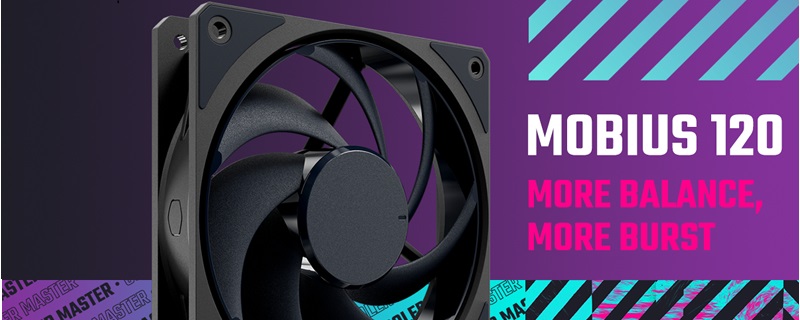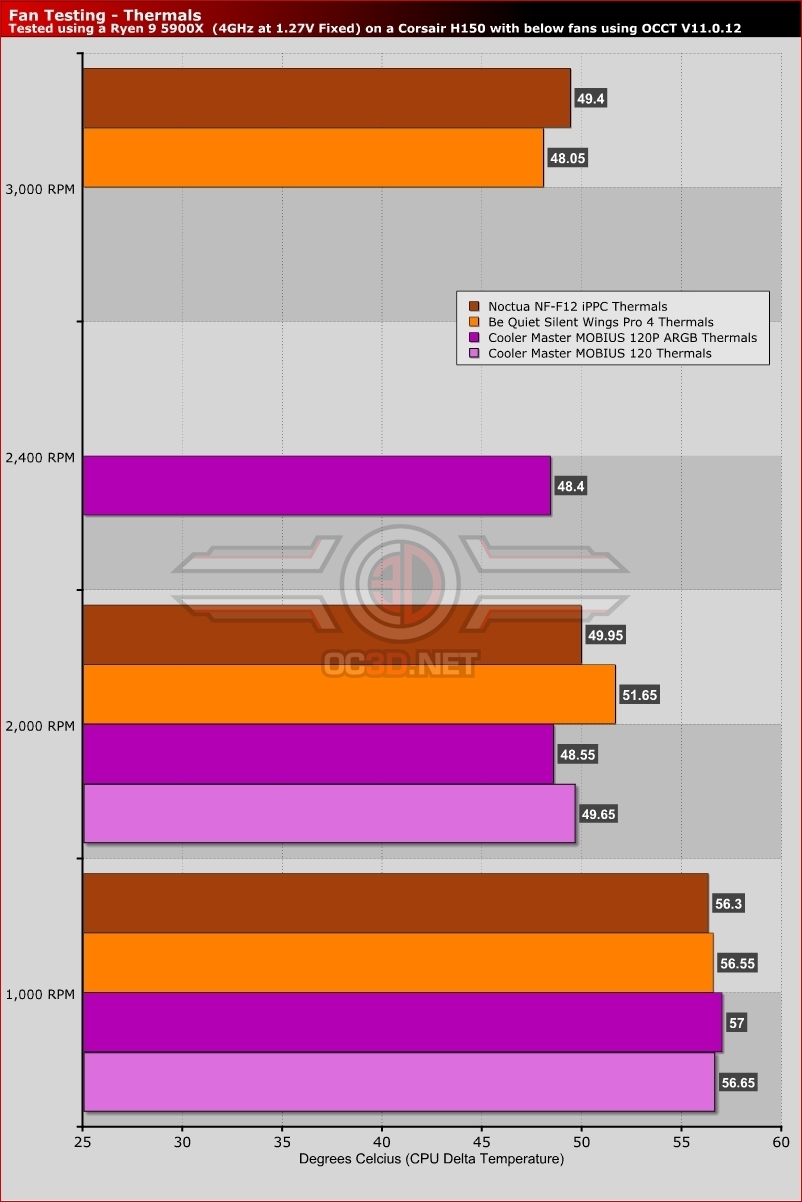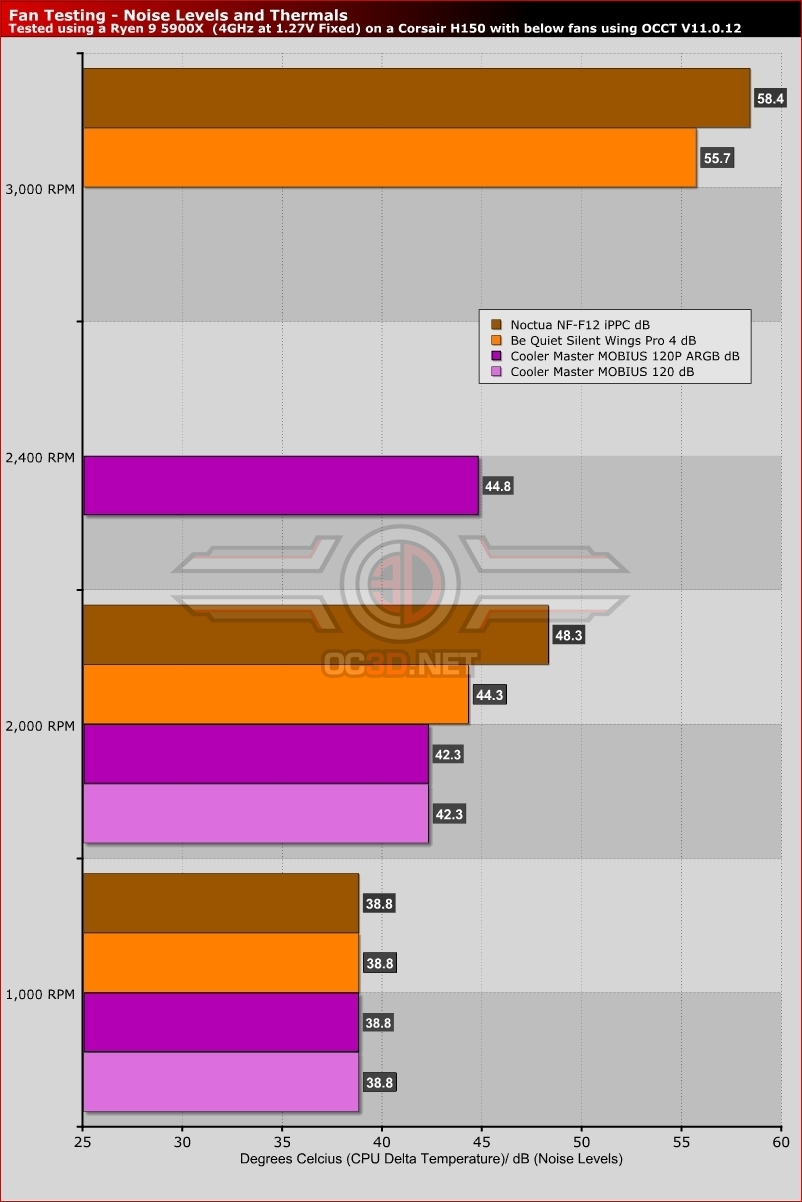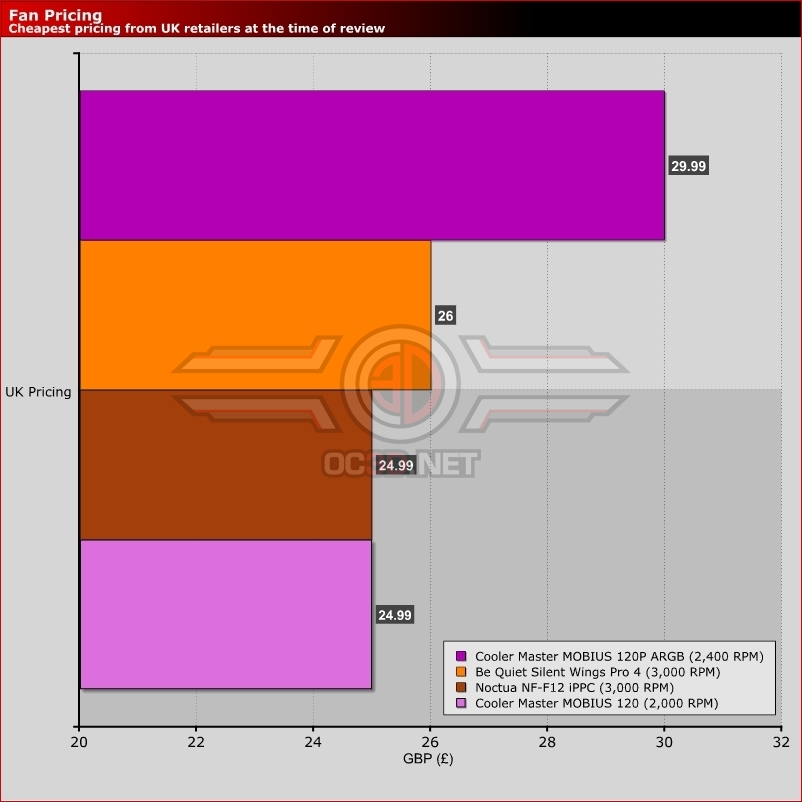OC3D Fan Showdown – BeQuiet Pro vs Noctua PPC vs Coolermaster Mobius
Test Setup
To test these fans, we utilized a system with a Ryzen 9 5900X processor and set our CPU to a fixed all-core frequency of 4GHz at 1.27V to ensure that thermal loads remained consistent and that boost clock behaviour would not impact our results. We connected three of the fans we tested onto a Corsair H150i heatsink and placed our CPU under a heavy thermal workload using OCCT V11.0.12. This heavy loading was maintained for 30 minutes and the average peak temperatures of the Ryzen 9 5900X’s two CCDs are listed in the thermal charts below.Â
Out test system sits within a Fractal Define 7 XL chassis with three Corsair ML140 fans in its front running at 2,000 RPM. We also recorded the audio levels of the room using an audio meter, finding that the room’s ambient noise levels are 38.8dB
This testing was conducted in a thermally controlled environment that sits at a temperature of 20 degrees celcius. In the charts below, we record the delta temperatures of our test system, which is the temperature of the system above out 20 degree ambient temperature. IE, a delta temperature of 49.4 degrees is 69.4 degrees in real world terms. Â
Thermal Performance
To say the least, Cooler Master surprised us here. Their new Mobius Series fans deliver excellent performance levels in our 2,000 RPM tests, edging out their rivals, even if only slightly.Â
The most notable thing that our testing uncovered is that moving past 2,000 RPM did little to lower the thermals of our CPU. Cooler Master’s Mobius fans at 2,000 RPM were able to deliver similar or better results than the fans we tested at 3,000 RPM. Simply put, raising fan speeds give us diminishing returns.Â
Noise Levels
When it comes to noise levels, it is worth remembering that a increase of 10 dB will effectively double your perceived loudness of something. Even a 2-3 dB increase in noise levels is noticeable, especially if you are listening out for it.Â
Sadly, our testing is limited by the ambient noise of our testing space. 38.8dB is as low as it goes, and there was nothing that we could do to lower it further. This means that our 1,000 RPM results are effectively measuring the noise levels of our room and not the noise levels of the fans we tested.Â
Starting at our 3,000 RPM tests, we found that Be Quiet’s Silent Wings Pro 4 fans were quieter than Noctua’s NF-F12 iPPC fans. On top of that they also delivered lower thermals. This makes Be Quiet’s Silent Wing Pro 4 fans better fans, though it is worth remembering that Noctua’s NF-F12 design is old by today’s standards.Â
Cooler Master ended up impressing us most, offering the lowest noise levels at 2,000 RPM with their Mobius series fans. Beyond that, Cooler Master’s faster Mobius 120P ARGB fans were barely louder than Be Quiet’s Silent Wings Pro 4 fans at 2,400 RPM when the latter was running at 2,000 RPM. Â
PricingÂ
Overall, the pricing of premium fans are similar across the board, with most models costing around £25 while Cooler Master’s ARGB Mobius model ships for £30. If you want RGB and higher peak speeds, Cooler Master will charge you extra money for that.Â
The pricing below was found by searching though various UK retailer. Be willing to shop around to ensure that you get the best fan prices, as some retailers can charge as much as £5 more than others per fan.Â






